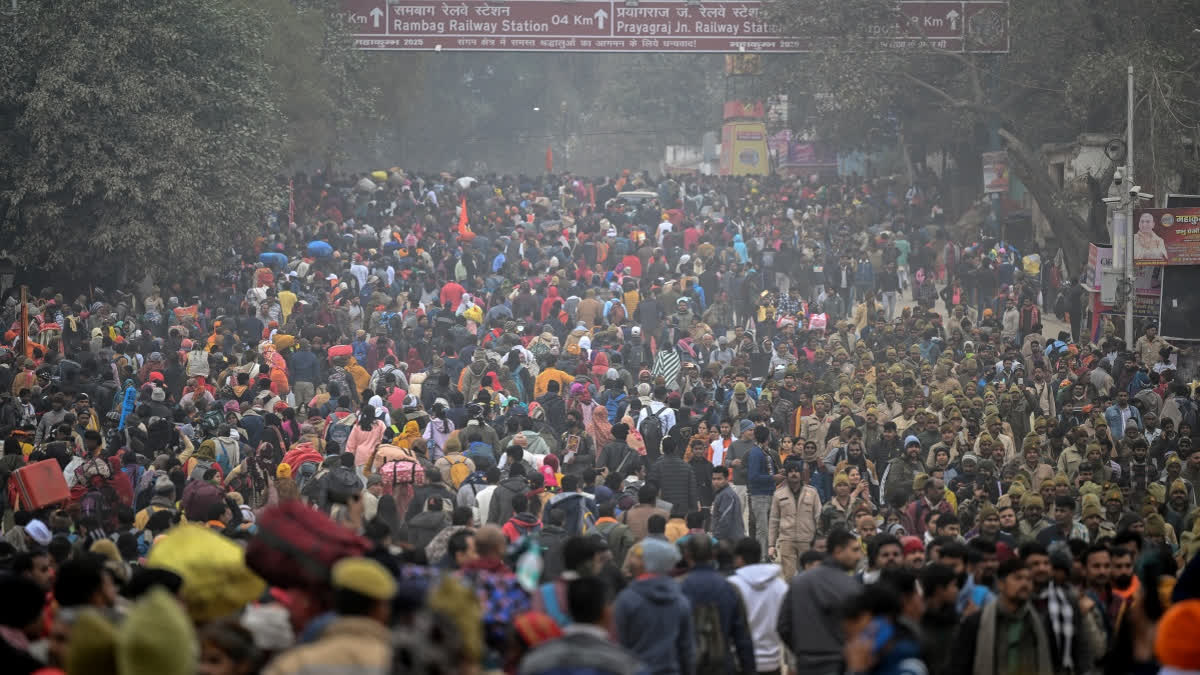Prayagraj:Keen to improve India's abysmal crowd management record at large-scale religious events, organisers of the world's largest human gathering are using artificial intelligence to try to prevent stampedes.
Organisers predict up to 400 million pilgrims will visit the Kumbh Mela, a millennia-old sacred show of Hindu piety and ritual bathing that began Monday and runs for six weeks. Deadly crowd crushes are a notorious feature of Indian religious festivals, and the Kumbh Mela, with its unfathomable throngs of devotees, has a grim track record of stampedes.
"We want everyone to go back home happily after having fulfilled their spiritual duties," Amit Kumar, a senior police officer heading tech operations in the festival, told AFP. "AI is helping us avoid reaching that critical mass in sensitive places."
More than 400 people died after being trampled or drowned at the Kumbh Mela on a single day of the festival in 1954, one of the largest tolls in a crowd-related disaster globally. Another 36 people were crushed to death in 2013, the last time the festival was staged in the northern city of Prayagraj.
But this time, authorities say the technology they have deployed will help them gather accurate estimates of crowd sizes, allowing them to be better prepared for potential trouble. Police say they have installed around 300 cameras at the festival site and on roads leading to the sprawling encampment, mounted on poles and a fleet of overhead drones.
Not far from the spiritual centre of the festival at the confluence of the Ganges and Yamuna rivers, the network is overseen in a glass-panelled command and control room by a small army of police officers and technicians.
"We can look at the entire Kumbh Mela from here," said Kumar. "There are camera angles where we cannot even see complete bodies and we have to count using heads or torsos." Kumar said the footage fed into an AI algorithm that gives its handlers an overall estimate of a crowd stretching for miles in every direction, cross-checked against data from railways and bus operators.
"We are using AI to track people flow, crowd density at various inlets, adding them up and then interpolating from there," he added. The system sounds the alarm if sections of the crowd get so concentrated that they pose a safety threat.
